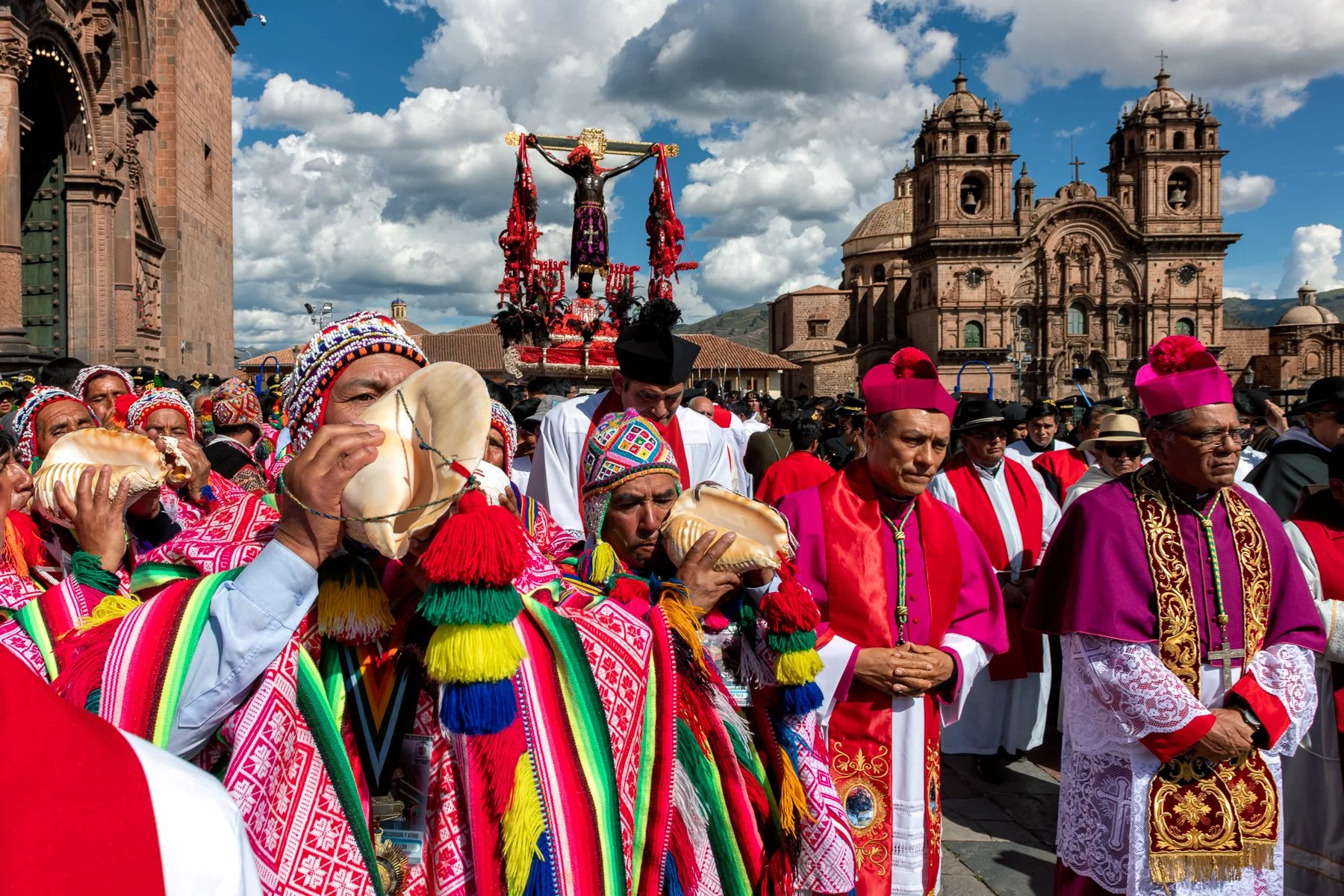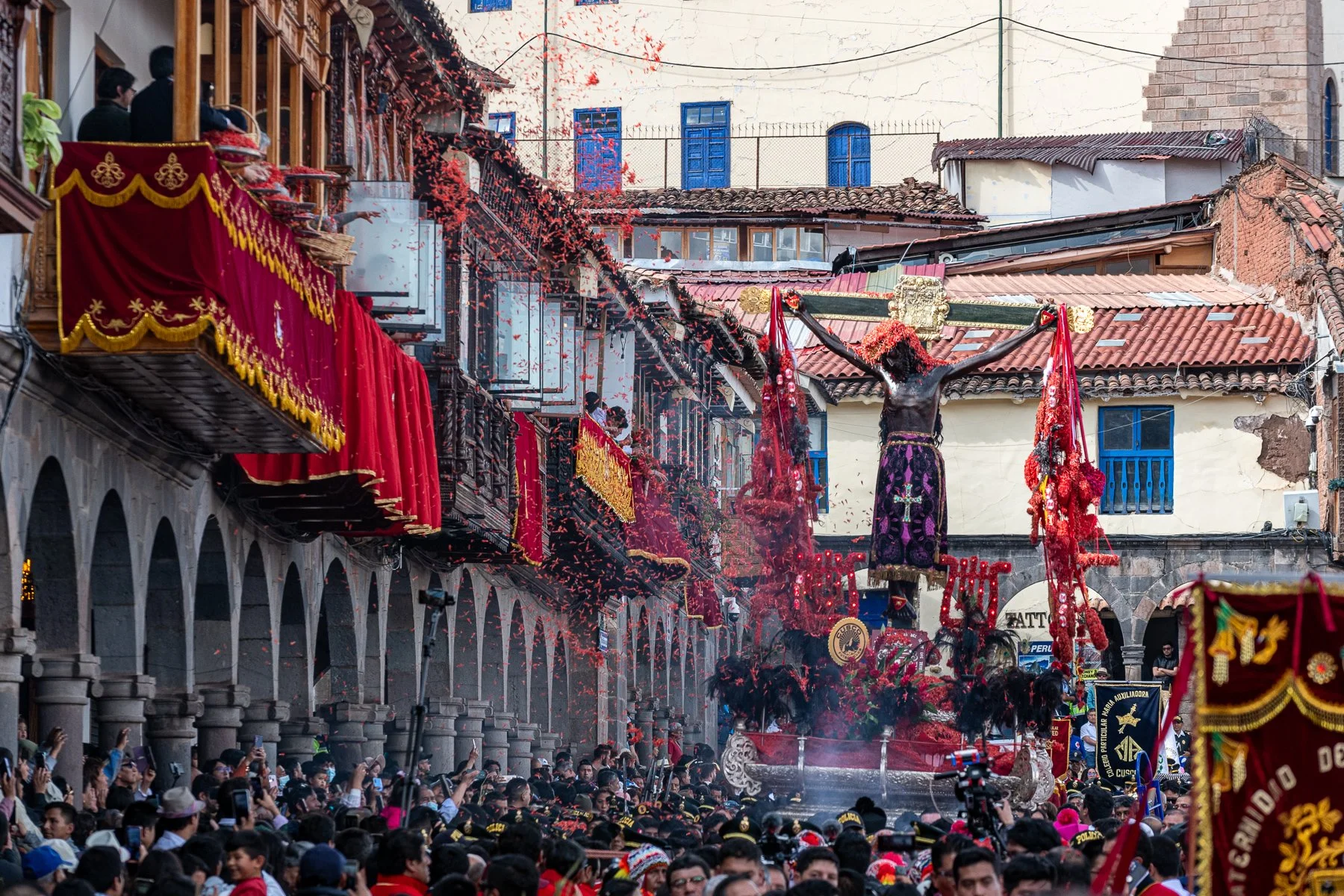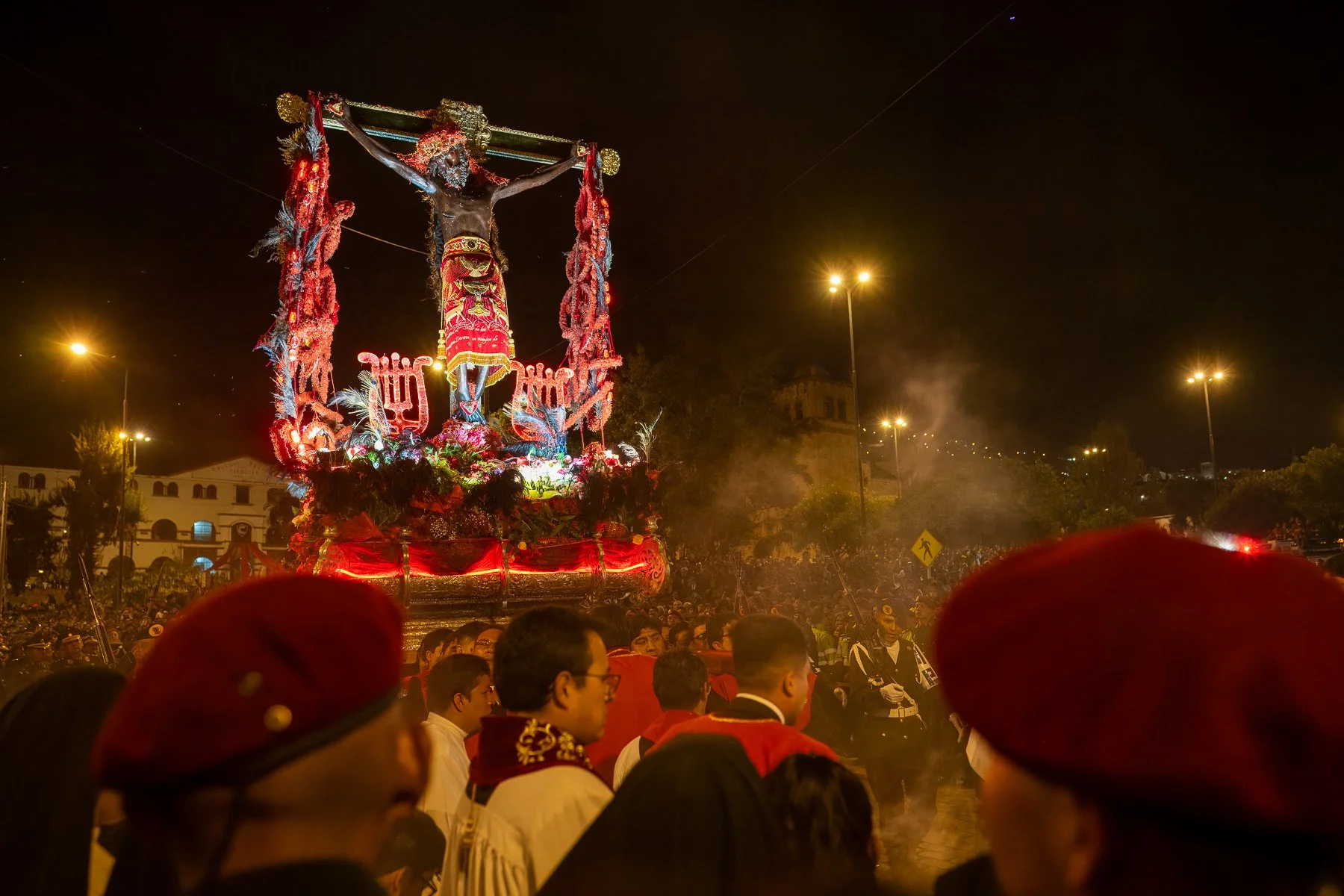The Lord of Earthquakes
Spring greetings to you all. I am trying another new way of presenting images in this post. You can click on the image above and view as a gallery at your own pace. Please let me know your thoughts on the different ways I have been displaying images. Thanks!
The bells are ringing out and fireworks blast throughout Cusco this morning as people rejoice at the resurrection of their Lord and Saviour Jesus Christ. Catholicism is the dominant religion here, as it is throughout most of South America, and Semana Santa (Holy Week) is the most important week of the year for the faithful of Peru.
Here in Cusco, the Catholic traditions are blended with Quechua culture, and the most important celebration of Semana Santa is El Señor de Los Temblores or Taytacha Temblores (The Lord of Tremors or Lord of Earthquakes). It is held on the Monday before Easter and is considered one of the most impressive festivities in the city.
The Spanish brought Catholicism with them when they conquered Peru. The conquistadors used their military might to overthrow the Inca Empire, and the church was the tool used to command the minds of the people. It proved to be particularly difficult to do so in Cusco, which was the capital of the Inca Empire, as the people continued to worship their own deities.
In an effort to overcome this challenge and to convert the people, a statue was carved of the crucified Jesus having darker skin so the Inca would see more of themselves in him. After its completion, the statue was brought to Cusco. The story goes that in 1650 a large earthquake struck Cusco causing immense damage throughout the city. As the earthquake shook the city, the statue was carried out from the church where it was displayed, and the tremors immediately stopped.
El Señor de Los Temblores is now known as the patron saint of Cusco, and each year on Holy Monday, the statue is brought from the Cusco Cathedral and paraded through the historic center. Thousands of worshippers toss red flower petals representing the blood of Jesus onto the statue as it passes. The parade goes on for hours as the statue makes stops at churches throughout the city and blessings are made.
There is plenty of debate on the actual story, along with the origins of the statue and its celebration. However, it is now one of the most important religious celebrations of Cusco.
A Happy Easter, Kosher & Joyous Passover, Generous Ramadan, and a Hoppy Ēostre to you all in whatever way you mark the occasion.
MB








